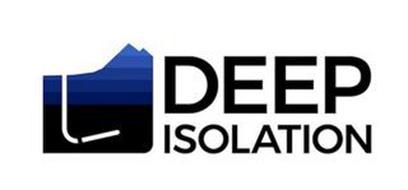Part 2 of 2 Parts (Pease read Part 1 first)
The DI prototype nuclear waste canister contained a steel rod to simulate the weight of a nuclear fuel rod. It was lowered on a cable two thousand feet into the ground and then moved sideways four hundred feet by an underground “tractor”. The cable was then detached and pulled out of the hole. Later, the cable was reinserted into the hole where it was able to attach to the prototype canister and pull it back out of the hole.
Forty observers were present for the test. These included representatives from the DoE, nuclear, oil and gas industry professionals as well as investors, environmentalists and private citizens. The November test was the first time that the DI system was demonstrated in public.
If this system is implemented for national spent nuclear fuel disposal, the nuclear waste would be placed in corrosion-resistant canisters. These canisters would be about a foot in diameter and fourteen feet long. The drill hole, lined with a steel casing, would be vertical at first and then would curve gradually until it was horizontal with a slight upward tilt. The horizontal section would be as much as two miles long and would be anywhere from a few thousand feet to two miles deep. Once the waste canisters are in place, the vertical section of the hole would be filled with rock, bentonite and possibly other materials.
Drilling technology is well-developed and drilling rigs can be easily transported to the site of nuclear reactors. Most of the nuclear reactors in the U.S. are in the eastern half of the U.S. which contains many basement rock formations.
One of the benefits of the deep drill holes is that the waste is stored in stable rock far below the water table. Another benefit is that it is far less expensive to drill small holes down to basement rock than to excavate shallower geological repositories. A third benefit is that these holes could be drilled as needed on the site of nuclear power plants which means that there would be no need to transport the dangerous spent nuclear fuel. A fourth benefit is that they could be drilled a few at a time over a periods of years and be immediately used as opposed to the difficulty of having to build a centralized nuclear waste repository which could not be used until it was completely finished.
Richard Muller is the Chief Technology Officer of Deep Isolation. He said, “Right now, the US is holding 80,000 tons of highly radioactive nuclear waste. Something must be done with this, and every major scientific group that has studied the challenge concluded that putting it deep underground is the safest solution for the present and future generations. A drilled repository allows you to go deeper while disturbing less rock. It is both safer and less expensive than a mined repository.”
Of all of the systems proposed for the disposal of spent nuclear fuel that I have researched, it has always seemed to me that drilling deep boreholes in basement rock is the most practical.
